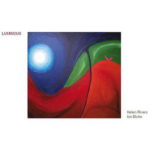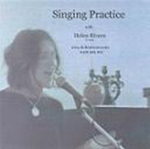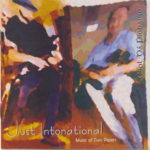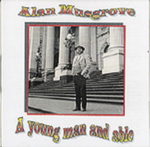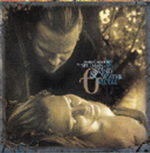Description
The album “Yes Captain” by Helen Rivero. This album is a collection of
bilingual compositions which has been described as a Jazzy-folk blend.
CD review by Tony Smith
This album is clearly a demonstration and celebration of Helen Rivero’s rich and diverse heritage.
For monocultural Anglos, Rivero’s background might seem highly complex.
Sephardic Jews share Spanish, Hebrew, Moroccan and many other roots.
Their music encapsulates flamenco, klezmer, belly dance and gypsy influences.
Rivero says: ‘I hope you’re in the mood to listen’.
She soon ensures we are.
The 13 tracks on this 2007 CD are originals.
They arise from Helen Rivero’s experiences and express her joy in having such a rich background on which to draw.
Track 13, ‘Bobby Pins’, almost a wind song, was created by Rivero with Kimmo Vennonen, but the other 12 are by Rivero.
‘Pluck’ is a brief instrumental with some voice, but the titles of the songs reveal the cheeky intentions behind Rivero’s music: ‘Dainty feet’, ‘One more thing’, ‘Somebody nice’, ‘Visit me’, ‘Soft walkway’, ‘Poison’, ‘Somebody else’, ‘Touching the floor’, ‘Habla me’, ‘Pretty bird’ and ‘He shall cut’.
Some tracks fit the cabaret mould.
Rivero has the kind of voice that can carry off the blues effect with ease.
The piano accordion is a perfect instrument to accompany the tango rhythms, in turn languid and frenetic, but always passionate.
The ACT Government should feel well repaid for its support for this dynamic artist.
The list of instruments and players supporting Rivera is lengthy.
Many of the instruments listed are ‘playful’ – music box, cellophane, toy piano, happy apple, toy hurdy gurdy, toy whirring plane, ocarina, melodica, microwave oven, junk percussion and wineglasses.
Then there are the singing saw of Judy Turner, contrabass of Holly Downes, Laslo Lakk’s Transylvanian viola, the tuba of Robert Speers, mandolin of Nic Gellie and Chris Stone’s violin.
Andrew Purdam (piano accordion, Irish bouzouki, tonbak, djumbuk, tabla, pakhavaj) and Ian Blake (saxophones, clarinets, cittern, mandola, pods, keyboards, ukulele, lyre, tambourine) supply various instruments.
Purdam and Blake were also involved in arrangements and recording.
Each track features a keen interplay between voice and instruments.
Sometimes, the two enrich one another in the expected way.
In other cases, Rivero sings a verse and then seems to stand back to allow the instrumentalists to improvise around her melody.
Some tracks are partly or wholly in Spanish, but this should not inhibit enjoyment of the songs.
Even where Helen Rivero sings ‘aah’ or ‘ya da la’, her enticing meanings are clear.
She could have written some lines just for the appreciative listener: ‘Well hello, I’m glad to meet you/ Completely glad to know that you exist’.
These are love songs with boundless energy, strength, sincerity and humour, free of sentimentality and cliché.
They are cosmopolitan and vivacious.
You have to love them back.

